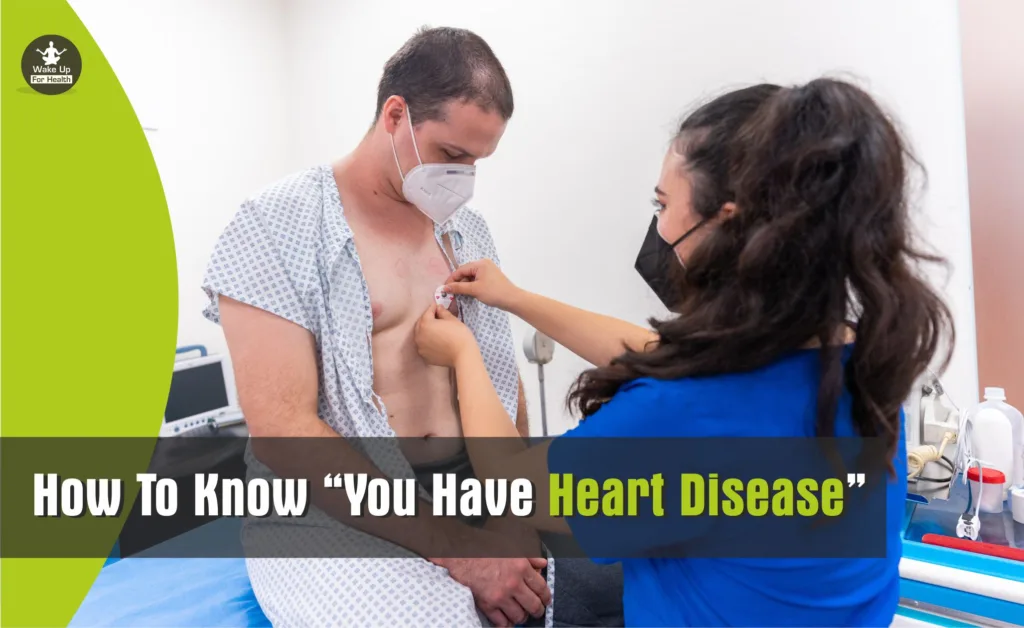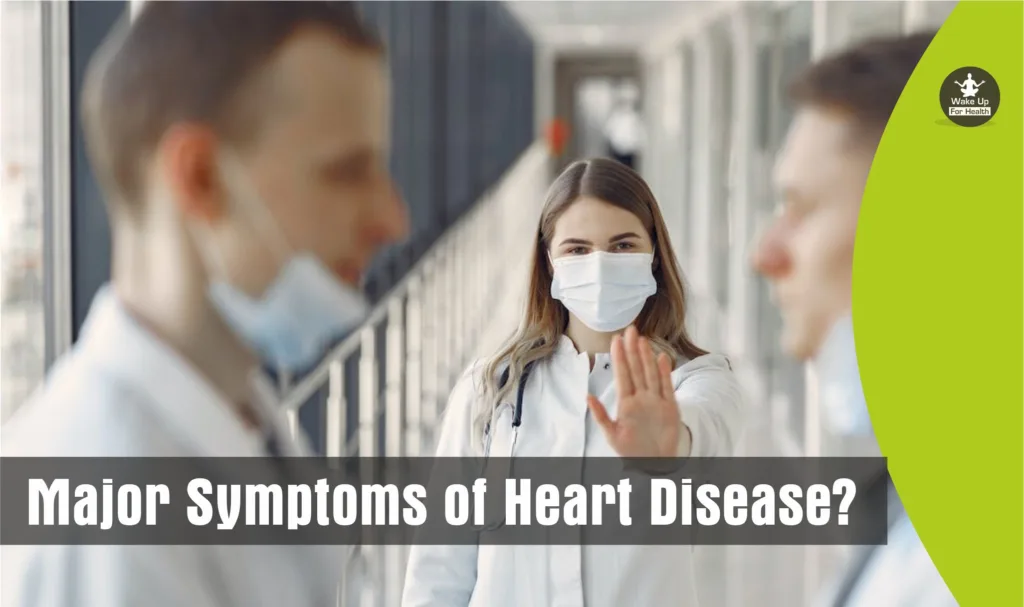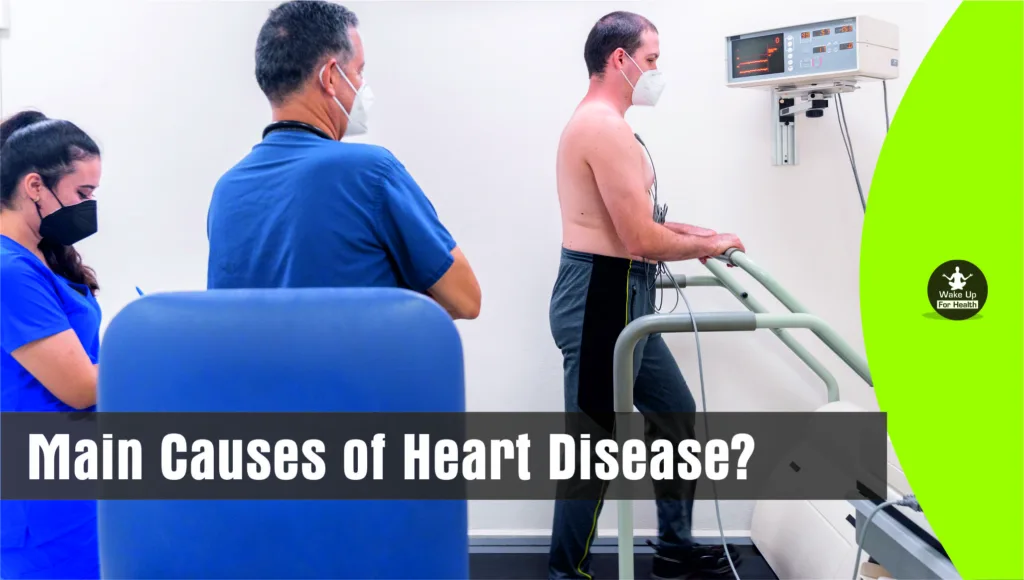Do you realise that one of the leading causes of mortality for both men and women is heart disease? By the way, there are 17 different categories for heart disease. However, one of those 17 components – a heart attack, also known as coronary thrombosis—is a prevalent one that claims the lives of the most individuals. You must have a basic understanding of how widespread heart disease is and how crucial it is for everyone of us to be informed about it after reading just two or three sentences.
For this reason, I will provide you with all the information regarding heart disease, including its many forms, symptoms, causes, and treatments.

Overview of Heart Diseases, Symptoms, Diagnostic Techniques, Treatment Methods, Prevention Tips
1. Angina Pectoris
It occurs when there is a blockage of 70% or more along with the accumulation of fat under the inner lining of the artery of the heart. When there is no proper supply of blood and oxygen to the heart, then this is the result of the extra effort made by the heart. This pain lasts only for two to four minutes. At that time the patient is unable to walk or bend down. This pain gets better on taking rest or on taking sorbitate tablet.
2. Heart Attack (Coronary Thrombosis)
Due to the accumulation of fat under the inner layer of the heart artery, with the increase of obstruction, this layer gradually gets stretched and finally one day this layer bursts. Along with the rupture, due to some chemical reactions, the blood clot gets jammed there and this barrier gets converted into 100%. It is a dangerous enemy of the heart because due to stoppage of blood supply in one part of the heart, some affected muscles of the heart get destroyed.
3. Hardening of Blood Vessels (Arterio Sclerosis)
It is a disease of the artery walls that first affects the middle and later the inner surface, in which there is a decrease in flexibility. This is a natural provision, but if it starts growing rapidly or at a young age, it becomes dangerous. It damages the coronary arteries and can attack any part of the body.
4. Palpitation of Heart
There are periods of heart palpitations. This disease is more in women than in men. The main reason for this is the weakness of the muscles and nerves of the heart. In this the hands often become cold like ice.
5. Enlargement of Heart
When the amount of toxins in the body increases, then there is more stress on the heart, to handle it, the emergency situation of the heart increases. There are some reasons for dilatation of the heart such as high blood pressure, weakness of the heart valves, obstruction in the arteries of the heart, diabetes etc.
6. Pericarditis
When there is swelling in the upper membrane of the heart, then there is sweet pain and the pulse moves fast, sometimes abnormal fever also occurs. Sometimes the heart appears to be swollen due to water coming in the membrane, in its enlarged condition there is difficulty in breathing.
7. Myocarditis
There is swelling in the muscles of the heart. Swelling of the heart also occurs due to diabetes, pneumonia etc.
8. Endocarditis
This swelling occurs in the innermost part of the heart.
9. Valvular Disease
Usually the mitral valve is most affected. Due to which shrinkage or hole or both become present in it. Aortic valve is also affected in a similar way.
10. Hypertrophy of the Heart Muscles
When the muscles of the heart have to do more work, they expand. High blood pressure is the main reason for this.
11. Burst of Arteries (Aneurysm)
Due to the weakening of the walls of the arteries, they burst like a balloon. Only 20% are expected to survive if the artery bursts.
12. Fatty Degeneration of the Heart Muscle
Like other organs, there is an increase in fat in the muscles of the heart in obese patients. At that time the heart muscle cells gradually start getting destroyed and fat starts getting deposited in their place. Muscles with excess fat become hard and they are not able to shrink properly. As a result, the blood in the cells does not get completely empty. Apart from this, along with the increase in fat, the heart valves also become hard and thick. Due to which the heart becomes bigger in size.
13. Irregular Heart Beat
In heart rhythm disorder, the heart beat is not properly rhythmic. Disharmony in that rhythm arises due to many reasons of heart disease.
Also Know : Why Cardiac Arrest Occur More in Morning?
14. Tachy Cardic
Sometimes there is an attack of increased pulse rate which lasts from a few days to eight days. The speed of pulse increases from 150 to 200 during impulse period.
15. Slow Heart Beat
The speed of normal pulse goes from 60 to 100 beats, sometimes the pulse also becomes slow. Healthy slow pulse is a sign of good health. If the heart rate is less than 50 then it can be dangerous.
16. Thrombosis
The levels of calcium, fat and cholesterol start accumulating in the blood arteries. If it accumulates in the blood vessels of the brain, paralysis occurs. If it accumulates in the blood vessels of the heart, it causes heart disease.
17. Rheumatic Heart Disease
This is due to joint fever, which affects the joints and heart valves simultaneously, causing heart valve defects. Although it can happen at any stage, but mostly it happens at the age of 5 to 15 years. After the age of fifty it is equal to none.
What Can Be A Symptom of Heart Disease?

Symptom 1
If someone often gets dizzy while getting up and sitting, but everything goes well within a short time, then it should be considered as the first warning of heart disease.
Symptom 2
Sudden excessive sweating, feeling of palpitations, heaviness in the chest, shortness of breath or difficulty in breathing on exertion.
Symptom 3
Suffocation, nausea or vomiting, vertigo or fainting, burning sensation in the stomach and coldness of hands and feet.
Also Know The Way to Keep Your Heart Young?
Symptom 4
Sometimes it also happens that a person’s heart becomes diseased but its symptoms are not felt.
Symptom 5
Years before the onset of heart disease, the patient experiences difficulty in breathing. But from this point of view, it would not be wrong to say that asthma patients can basically be heart patients as well.
Symptom 6
Chest pain in heart attack is very intense and the pain usually arises from the middle of the chest and spreads to the left arm and goes to the cervical region. Sometimes it goes towards the shoulder of the right hand and the lower jaw also. It increases on walking or doing more work. This pain usually lasts for more than 5 to 10 minutes and sometimes lasts for hours.
How to Diagnose a Heart Disease?
1. Physical Examination – Blood pressure and heart rate are checked in this.
2. Blood Test – In this, serum lipid profile and blood sugar rate are checked.
3. ECG (Electrocardiogram) – Any change in ECG indicates heart disease.
4. T.M.T. (Treadmill Test) – This test is done when E.G. There is no solid proof available.
5. Echocardiogram – This is usually done to check the heart’s ability to beat and the capacity of the heart’s valves.
6. Angiography – In this, a radio-opaque material is injected into the blocked artery through a long wire. This gives an idea of the blocking percentage.
What are the Causes of Heart Disease?

1. Having more than normal cholesterol, triglycerides in the blood causes heart disease.
2. Consumption of smoking or tobacco etc., wrong diet, excessive use of meat, egg, flour, sugar, salt, fried fried things, fiber, lack of food, excess of fast food causes heart disease.
3. Heart disorders also arise due to excessive consumption of medicines, stress, overwork, excessive fatigue, anger, incomplete sleep, over division, panic, anxiety, high blood pressure, diabetes, obesity, fever, gonorrhea etc.
4. Consuming more calcium pills and vitamin-D deficiency also increase heart disease.
5. Heart diseases are also often found due to hereditary defects.
What is Treatment of Heart Diseases?
1. Fasting and less food is right for heart patients. It does not mean that you will keep fast everyday.
2. Regular use of green leafy and fibrous vegetables and sprouted grains in food.
3. Heart patient should take soyabean milk instead of animal milk.
4. Grapes and mango work as a tonic for heart disease.
5. Vitamin B which controls cholesterol, that’s why take flour bread and sprouted grains along with bran. Vitamin c plays a special role in converting cholesterol into bile salt, hence the use of lemon and amla is beneficial. Sesame milk is especially useful for the supply of calcium.
6. Soak fenugreek and black gram at night, drink their water in the morning and eat them. Add the same amount of water and seven leaves each of basil and mint to the juice of gourd and add some black pepper and consume it thrice a day.
7. Lecithin which is rich in green leafy vegetables, prevents the accumulation of grease in the arteries.
8. If the patient has complaints of cough and phlegm, then give warm foot bath. Take sun bath in the morning. Rest is the best treatment in the acute stage of the disease.
(Disclaimer : The purpose of this health-related article is to wake you up and aware of your health and to provide health-related information. Your doctor has a better understanding of your health and there is no substitute for their advice.)
7 thoughts on “Understanding Different Types of Heart Disease”